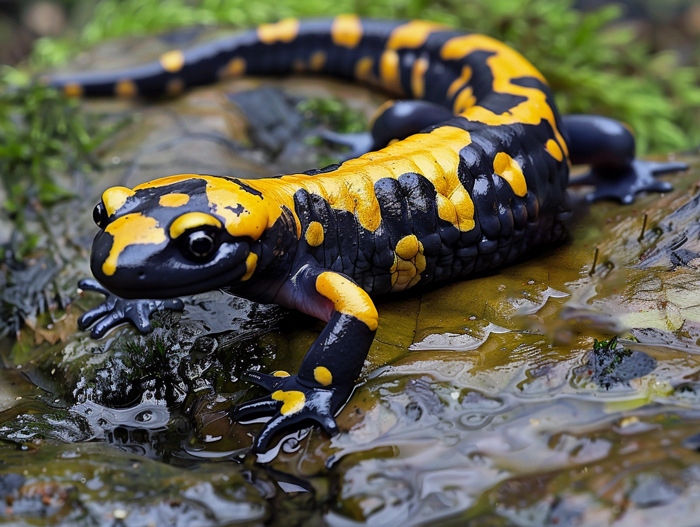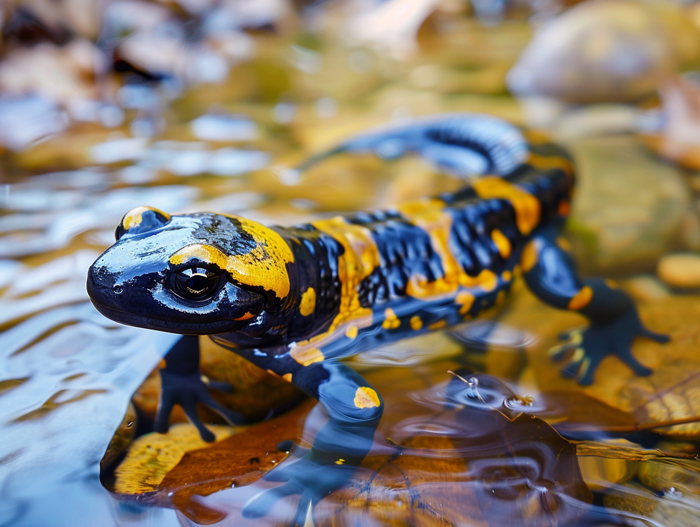Have you ever wondered if salamanders have gills? These fascinating creatures are known for their unique characteristics. Salamanders belong to the amphibian family and are often associated with moist environments. But do they rely on gills for breathing underwater?
In this text, we’ll investigate into the world of salamanders and explore the truth behind their respiratory systems. Understanding whether salamanders have gills is crucial to appreciating their adaptability to different habitats. Join us as we uncover the mysteries surrounding these remarkable amphibians.
Key Takeaways
- Salamanders primarily breathe through their lungs, but some species can also respire through their skin and buccal cavity.
- Salamanders are carnivorous creatures that feed on insects, worms, small fish, and other salamanders.
- They reproduce through internal fertilization, with some species giving birth to live young while others lay eggs in water.
- Salamanders have over 600 species globally, varying in size, color, and habitat preferences.
- Larval salamanders have gills for aquatic respiration, which are crucial for efficient respiration, swimming, and osmoregulation.
- The transition from gills to lung-based respiration is a significant metamorphosis for salamanders as they adapt to a more terrestrial lifestyle.
Overview of Salamanders

Salamanders are fascinating creatures with unique characteristics that set them apart from other amphibians. As you discover the area of salamanders, keep in mind the following key points:
- Habitat: Salamanders are typically found in moist environments such as forests, wetlands, and caves.
- Physical Features: Salamanders have a sleek body, long tail, and four legs. They are known for their regenerative abilities, being able to regenerate lost limbs.
- Respiratory System: Unlike some other amphibians, salamanders do not have gills throughout their lives. They typically have lungs for breathing, but some species also perform respiration through their skin and buccal cavity.
- Diet: Salamanders are carnivorous creatures, feeding on insects, worms, small fish, and even other smaller salamanders.
- Reproduction: These creatures reproduce through a process called internal fertilization. Some species give birth to live young, while others lay eggs in water.
- Variety: With over 600 species of salamanders worldwide, these creatures come in a wide range of sizes, colors, and habitats.
Understanding the intriguing world of salamanders opens doors to appreciating the complexity and diversity of amphibian life.
Anatomical Features of Salamanders

When looking at the anatomical features of salamanders, it’s essential to consider how these creatures adapt to their surroundings. Two key aspects stand out in understanding their anatomy:
Skin and Lungs
Salamanders have permeable skin that allows for gas exchange, which contributes to their respiration. They can also breathe through their lungs, making them versatile in different environments.
Gills
While some larvae have gills for aquatic respiration, salamanders typically lose their gills as they mature. This transition reflects their adaptation to terrestrial life while retaining some amphibious qualities.
Salamanders’ Aquatic Lifestyle

Benefits of Gills in Aquatic Environments
In their larval stage, salamanders possess gills that play a vital role in their adaptation to aquatic environments:
- Efficient Respiration: Gills allow them to extract oxygen from water to support their underwater life.
- Help Swimming: These structures enhance their ability to navigate and thrive in their aquatic habitats.
- Osmoregulation: Gills help maintain the salamanders’ internal balance of salt and water levels.
Transitioning from gills to lung-based respiration is a crucial metamorphosis for salamanders as they move towards a more terrestrial lifestyle.
Conclusion
Salamanders’ gills play a crucial role in their aquatic lifestyle, aiding in respiration, swimming, and osmoregulation. The transition to lung-based respiration marks a pivotal step towards their terrestrial evolution. Understanding the significance of gills sheds light on the remarkable adaptations of these fascinating amphibians.

Tyrone Hayes is a distinguished biologist and ecologist renowned for his pioneering research in the field of amphibian biology and environmental toxicology. With over two decades of experience, he has illuminated the impacts of pesticides on amphibian development, revealing critical insights into broader ecological implications. Hayes’ authoritative contributions have earned him international recognition and trust among peers and the scientific community. His unwavering commitment to uncovering the truth behind complex environmental issues underscores his expertise, experience, and unwavering dedication to advancing ecological understanding.
